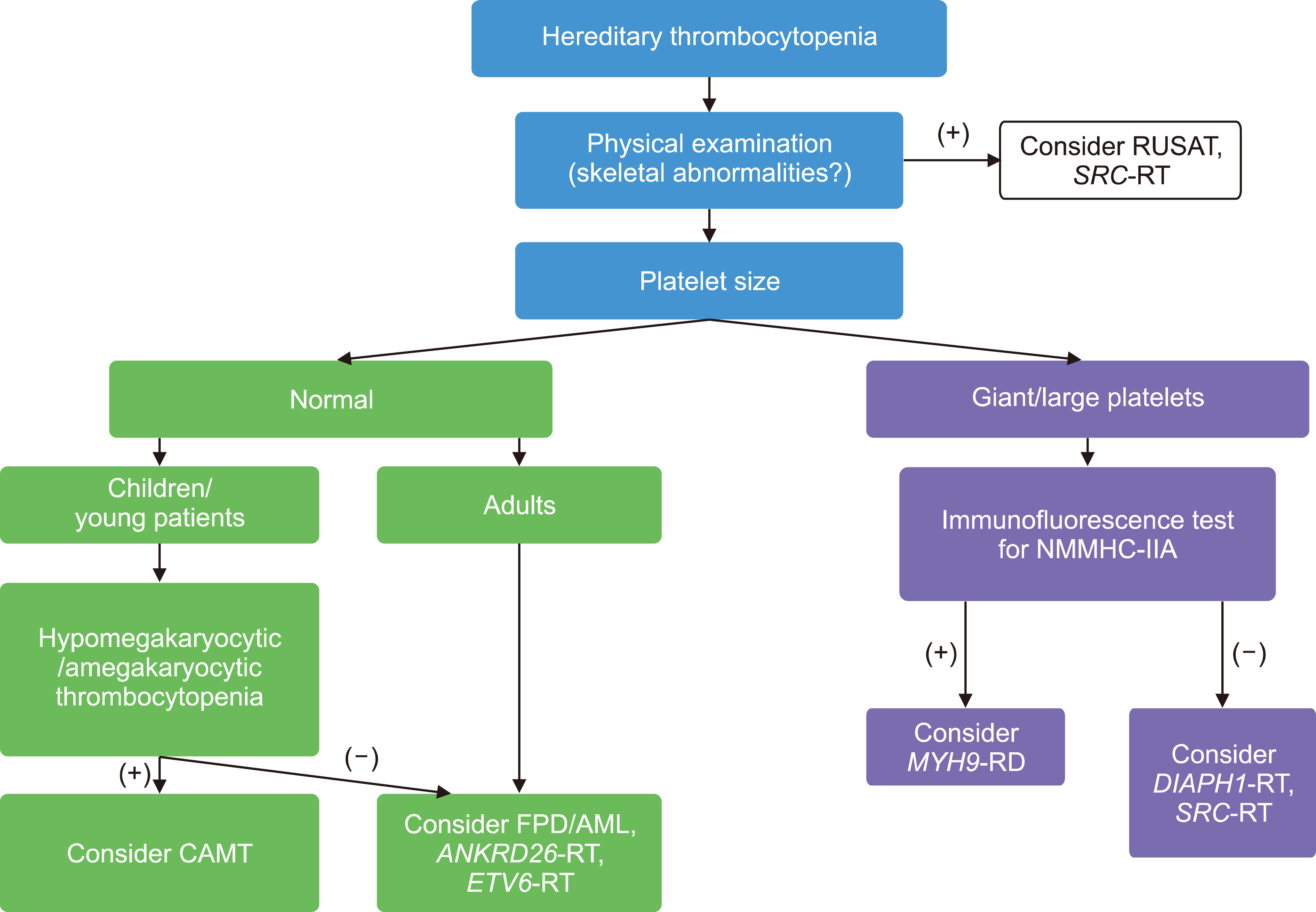Immune thrombocytopenia (ITP) is an acquired autoimmune disorder characterized by accelerate platelet destruction and impaired platelet production, accounting for 1–4% of pregnancy thrombocytopenia [
1,
4]. It is the most common cause of a platelet count <50×10
9/L in the first or second trimester [
1,
17]. Patients with a history suggestive of ITP or those with a platelet count <80×10
9/L should be investigated for possible ITP [
1]. Because no definite diagnostic tests are lacking, diagnosis of ITP is based mainly on the exclusion of other cause of thrombocytopenia in pregnancy. Although most cases present with platelet count of >70×10
9/L, approximately 20% of cases may require treatment before labor [
1]. According to the International Consensus Report (ICR) guidelines for ITP, a platelet count between 20 and 30×10
9/L in a nonbleeding patient is safe for most pregnancy and a platelet count ≥50×10
9/L is preferred for delivery [
3]. Corticosteroids and intravenous immunoglobulin (IVIG) are first-line treatment options [
3,
17]. Although corticosteroids are generally safe in pregnancy, there are potentially serious side effects, especially when high-dose corticosteroids are used, including an increased risk of gestational diabetes, hypertension, emotional lability, and an increased risk of cleft palate in the fetus when given in the first trimester [
17-
19]. If a rapid response is needed or intolerance to corticosteroids occurs, IVIG may be preferable [
17]. There is no consensus on optimal second-line treatment for ITP in pregnancy. Immunosuppressant, such as azathioprine and cyclosporine, have been used in pregnant women with acceptable adverse effects [
20]. Rituximab, CD20 monoclonal antibody, can be considered in refractory cases, but can cause prolonged lymphopenia in newborn, resulting from suppression of neonatal B lymphocyte development [
20]. Splenectomy may be performed for refractory ITP, preferably in the second trimester [
20]. As safety data for thrombopoietin receptor agonists (eltrombopag and romiplostim) is limited in pregnancy, thus routine use of these agents during pregnancy is not recommended [
20]. Platelet transfusions are not routinely recommended except in the setting of significant bleeding or platelet count of <50×10
9/L near delivery. Given that the method of delivery is determined by obstetric indications, platelet count >20×10
9/L for vaginal delivery and >50×10
9/L for cesarean delivery are recommended to prevent excessive blood loss [
3,
20]. Although 10–15% of neonates are born with thrombocytopenia, severe thrombocytopenia is uncommon and intracranial hemorrhage is rare [
21].





 PDF
PDF Citation
Citation Print
Print


 XML Download
XML Download